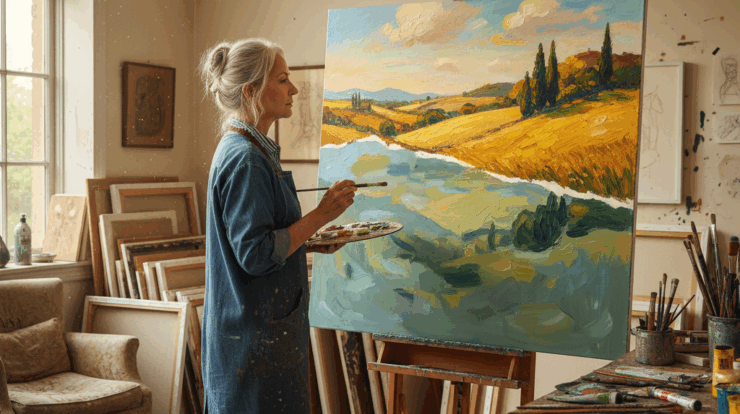
We’ve been talking a lot lately about how to connect with clients—listening, asking questions, and building confidence. Let’s change gears and get practical. Every artist ends up with a stack of paintings that didn’t quite land. Some are experiments that went sideways. Others are solid, but not quite worth keeping. So the question naturally comes up: should you paint over them?
The short answer: sometimes yes, sometimes no.
Why It’s Normal
Even history’s greats recycled their canvases. Paint, boards, and linen weren’t cheap, and inspiration didn’t always wait for a new surface. Beneath the finished layers of many masterpieces, restorers have found earlier works—false starts and forgotten ideas. There’s something reassuring about that. Repainting isn’t a failure; it’s part of the creative cycle.
Reasons You Might Paint Over
-
You’ve evolved. What once felt like your best work might now look like a warm-up.
-
You want to experiment. Sometimes an old piece is the perfect test surface for a new technique.
-
You like the texture. The underpainting can add unexpected depth or visual history.
-
You’re cleaning house. Old canvases take up space. Repurposing them can feel productive and freeing.
Painting over old work can also quiet that perfectionist voice—it’s permission to move forward instead of clinging to something that doesn’t represent where you are now.
When to Think Twice
There are times when repainting might not be worth it.
-
The old work is still relevant in your current body of work – it just hasn’t found the right home.
-
You’re reusing surfaces in ways that might not hold up long-term. Even if you’re not a materials expert, it’s wise to be cautious about selling repainted works unless you’re sure they’re stable.
-
The piece has emotional or developmental value. Sometimes it’s better to keep earlier works as milestones in your personal collection rather than raw material.
If you’re unsure about the technical side—adhesion, longevity, layering—it’s fine to use old paintings for practice, studies, or underpaintings rather than finished, salable work.
Other Ways to Reuse or Refresh
-
Cut and crop. You might find a beautiful section worth saving on its own.
-
Sand and re-gesso. Turn it into a clean slate if you prefer not to see the old work beneath.
-
Paint new studies on the back. Not every surface has to become a finished piece.
-
Trade or gift old work. Sometimes clearing them from your studio gives them new life elsewhere.
The Bottom Line
Painting over an old piece doesn’t mean erasing your past—it means building on it. Whether you reclaim the surface or move on entirely, what matters is that your work—and your materials—support where you’re headed now.
Keep what teaches you. Rework what challenges you. And let the rest go without regret.
Have You Painted Over Older Works?
Have you ever painted over an old piece? How did it change your relationship with the work—or with your own process? What advice would give a fellow artist considering painting over an old piece? What alternatives might you suggest?
